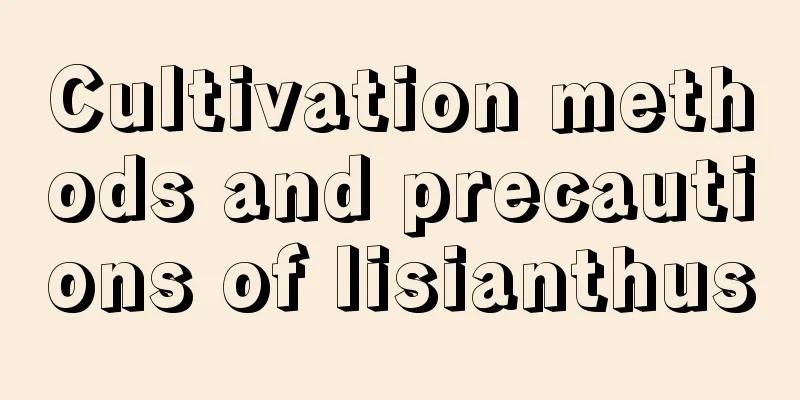Cultivation methods and precautions of lisianthus

How to grow lisianthustemperatureThe suitable growth temperature of lisianthus is 15℃-28℃. It can tolerate the low temperature of 0℃ for a short time. The night temperature during the growing season cannot be lower than 12℃. If the temperature is lower than 5℃ in winter, the leaves of lisianthus will become rosette-shaped and will not bloom. If the temperature is higher than 30℃ in summer, the flowering time of lisianthus will be shortened. WateringLisianthus likes a humid environment, but too much water will damage the roots of Lisianthus and make it prone to disease. Too little water will weaken the growth of the plant and bloom earlier. Therefore, watering should be moderate and not excessive. illuminationLisianthus prefers a warm, well-lit environment. Long-term light helps the growth of stems, leaves and flower buds, so it is best to maintain 16 hours of light a day. soilLisianthus prefers fertile, loose, well-drained soil. It is best to use improved garden soil with peat soil, rice bran and a small amount of lime. Things to note when growing lisianthusUse drip irrigationLisianthus has very strict requirements for water. Too much water will damage the roots, and too little water will cause the stems and leaves to grow weak, so it is best to use drip irrigation, which is most beneficial to the growth of Lisianthus. Disinfect the potting soilIf you want to plant lisianthus in a pot, the substrate used needs to be treated with high-temperature steam or bromomethanol for disinfection, and the pH value of the soil should be maintained at 6.5-7.0. Avoid high temperature and humidityAfter the flower buds are formed, it is necessary to avoid high temperature and high humidity environments, otherwise it is very easy to cause fungal diseases. Control the amount of fertilizerBefore planting lisianthus, add manure, bone meal, etc. as base fertilizer to the soil. Because lisianthus has a relatively large demand for fertilizer, it is necessary to apply fertilizer in time during the growth process. |
<<: Related species of King Protea
>>: Cultivation methods and precautions of purple flowers
Recommend
How to reproduce hairy starfish
1. Seed propagation The time is generally chosen ...
How much is the yield of Gaola 819 pepper (introduction to the characteristics of Gaola 819 chili pepper variety)
High-spicy 819 pepper production Gaola produces 1...
When is the best time to plant kale?
Kale has high nutritional value and is a favorite...
What fertilizer is suitable for Polygonatum sibiricum base fertilizer application method
Effect of Polygonatum sibiricum Base Fertilizer P...
Leaf cutting method for female chicks
Preparation before leaf cutting of female chicks ...
Fig planting and cultivation techniques
The fig tree is a flowering plant belonging to th...
How to prune Christmas cactus
When to prune Christmas cactus Generally speaking...
How to care for the newly bought peony
1. Soil The soil requirements of peony are averag...
Fruit tree planting management guide in November
November is the transition period from autumn to ...
Ten kinds of flowers that you can't grow at home
1. Euphorbia pilosa The white juice inside the Eu...
Don’t throw away the ginger when it sprouts. Bury it in the soil and it will grow into fresh ginger in 3 months. You don’t need to buy it all winter!
Speaking of preventing colds, I wonder if everyon...
The difference between hawthorn and sea buckthorn
1. Difference of blades The leaves of hawthorn ar...
How to grow red sandalwood better? Where is it suitable to grow red sandalwood?
Although the small-leaf red sandalwood does not l...
What kind of flowers are most suitable for home cultivation?
What kind of flowers are most suitable for home c...
How to manage roses in spring (how to make roses sprout from the bottom and grow branches in early spring)
Spring is the season for rose sprouting. The numb...









